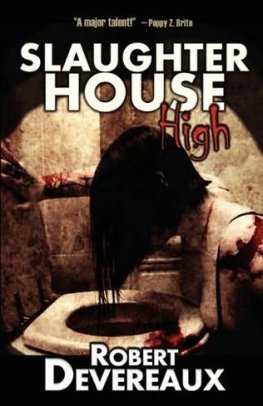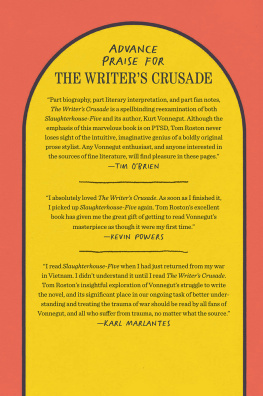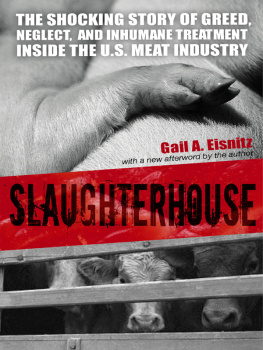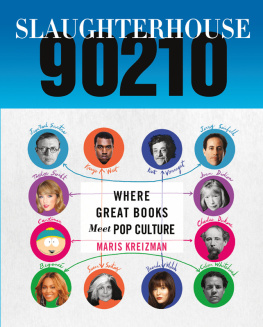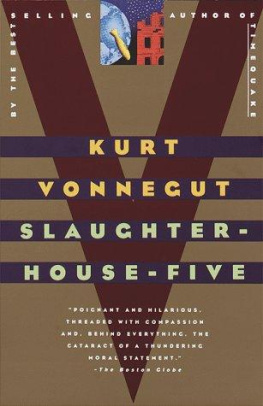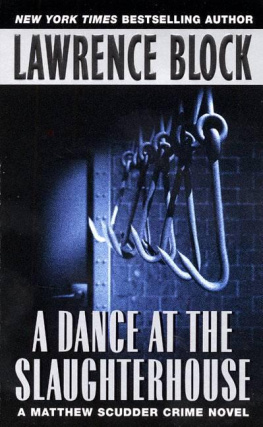Dennis S Smith - CliffsNotes on Vonneguts Slaughterhouse-Five
Here you can read online Dennis S Smith - CliffsNotes on Vonneguts Slaughterhouse-Five full text of the book (entire story) in english for free. Download pdf and epub, get meaning, cover and reviews about this ebook. year: 2007, publisher: HMH Books, genre: Art. Description of the work, (preface) as well as reviews are available. Best literature library LitArk.com created for fans of good reading and offers a wide selection of genres:
Romance novel
Science fiction
Adventure
Detective
Science
History
Home and family
Prose
Art
Politics
Computer
Non-fiction
Religion
Business
Children
Humor
Choose a favorite category and find really read worthwhile books. Enjoy immersion in the world of imagination, feel the emotions of the characters or learn something new for yourself, make an fascinating discovery.
- Book:CliffsNotes on Vonneguts Slaughterhouse-Five
- Author:
- Publisher:HMH Books
- Genre:
- Year:2007
- Rating:4 / 5
- Favourites:Add to favourites
- Your mark:
- 80
- 1
- 2
- 3
- 4
- 5
CliffsNotes on Vonneguts Slaughterhouse-Five: summary, description and annotation
We offer to read an annotation, description, summary or preface (depends on what the author of the book "CliffsNotes on Vonneguts Slaughterhouse-Five" wrote himself). If you haven't found the necessary information about the book — write in the comments, we will try to find it.
An odd book in that it mixes elements of science fiction with psychological analysis, Slaughterhouse-Five tells the story of Billy Pilgrim, a GI prisoner of war. He time-travels and wanders through a mysterious ether where spatial-temporal relationships are at odds with what we accept as reality.
CliffsNotes on Vonneguts Slaughterhouse-Five — read online for free the complete book (whole text) full work
Below is the text of the book, divided by pages. System saving the place of the last page read, allows you to conveniently read the book "CliffsNotes on Vonneguts Slaughterhouse-Five" online for free, without having to search again every time where you left off. Put a bookmark, and you can go to the page where you finished reading at any time.
Font size:
Interval:
Bookmark:
Copyright 2013 Houghton Mifflin Harcourt Publishing Company
All rights reserved
www.hmhco.com
cliffsnotes.com
No part of this work may be reproduced or transmitted in any form or by any means, electronic or mechanical, including photocopying and recording, or by any information storage or retrieval system without the prior written permission of Houghton Mifflin Harcourt Publishing Company unless such copying is expressly permitted by federal copyright law. Address inquiries to Permissions, Houghton Mifflin Harcourt Publishing Company, 215 Park Avenue South, New York, New York 10003.
The publisher and the author make no representations or warranties with respect to the accuracy or completeness of the contents of this work and specifically disclaim all warranties, including without limitation warranties of fitness for a particular purpose. No warranty may be created or extended by sales or promotional materials. The advice and strategies contained herein may not be suitable for every situation. This work is sold with the understanding that the publisher is not engaged in rendering legal, accounting, or other professional services. If professional assistance is required, the services of a competent professional person should be sought. Neither the publisher nor the author shall be liable for damages arising here from. The fact that an organization or Website is referred to in this work as a citation and/or a potential source of further information does not mean that the author or the publisher endorses the information the organization or Website may provide or recommendations it may make. Further, readers should be aware that Internet Websites listed in this work may have changed or disappeared between when this work was written and when it is read.
Trademarks: CliffsNotes, the CliffsNotes logo, Cliffs, cliffsnotes.com, and all related trademarks, logos, and trade dress are trademarks or registered trademarks of Houghton Mifflin Harcourt Publishing Company. All other trademarks are the property of their respective owners. Houghton is not associated with any product or vendor mentioned in this book.
Library of Congress Cataloging-in-Publication data is available.
ISBN: 0-8220-1205-7
eISBN 978-0-544-18396-4
v1.1013
Editor: Gary Carey, M.A., University of Colorado
Consulting Editor: James L. Roberts, Ph.D., Department of English, University of Nebraska
Some of Kurt Vonneguts critics have called him a skeptic, a pessimist, a fatalist, a malcontenteverything from a cynic to a worrywartfor his seemingly depressive view of civilization. Others have more accurately described him as a cultural scientist, a prophetic environmentalist offering humankind a glimmer of hope. Throughout much of Vonneguts writing, one theme resounds again and again: Like the toll of a funeral bell, he warns civilization that time on Earth is running out. In a number of his lectures and autobiographical works, he counsels that one day soon, we will all go belly-up like guppies in a neglected fishbowl. Suggesting an epitaph for our planet, he offers, We could have saved it, but we were too darn cheap and lazy.
One of the things that shape Vonneguts perception of civilization is the academic training he received while earning a masters degree in anthropology from the University of Chicago. He contends that because anthropology teaches students to seek explanations for humans comfort and discomfort in culture, society, and history, his villains are never mere individuals: Instead, they are the culture, the society, and the history studied by anthropologists. In Hocus Pocus, for example, he says that the primary character, excluding himself, is imperialism.
The son and grandson of architects, Kurt Vonnegut, Jr., was born on November 11, 1922, in Indianapolis, Indiana. The Vonneguts, a family of German descent, held beliefs of pacifism and atheismbeliefs that figure prominently in Vonneguts works. Educated in Indianapolis, his journalistic endeavors began as a reporter for his high-school newspaper and continued after he entered Cornell University in 1940 as a chemistry major, writing for the student newspaper.
The bombing of Pearl Harbor in December 1941 changed Vonneguts life. Despite his feelings of pacifism, he volunteered for military service. He was trained to operate a 240-millimeter howitzer, but because he had some university academic credit, and because he had been in the Reserve Officers Training Corps, the army sent him back to college at Carnegie Tech as part of the Army Specialized Training Program. When the army needed manpower for the invasion of Europe, he was sent to the infantry. In the 106th Infantry Division, assigned to defend a 75-mile stretch of the Luxembourg-Germany border, he was made a battalion intelligence scout, requiring him to sneak out ahead of Allied lines and observe the enemy.
In the winter of 1944, the Germans began their last, major military offensive of the war: the Battle of the Bulge. Vonneguts unit was unprepared for combat and was quickly overrun by the German army. Vonnegut was captured and placed in a work camp in Dresden, Germany. Along with 99 other American prisoners, he worked in a factory making a vitamin-enriched malt syrup for pregnant women.
The bombing of Dresden, lasting from February 13, 1945, to April 17, 1945, destroyed much of the cityhospitals, schools, churches, nursing homes, and apartment buildings. Up to 135,000 inhabitants were killed. After the air raid, Vonnegut was put on detail to remove and cremate the corpses that rotted throughout the city. Thousands of human carcasses were incinerated on huge funeral pyres or with flamethrowers. Vonneguts perception of this horrific misery was amplified further during the days of his liberation. Confined in the Russian zone, he spent time with Nazi concentration camp survivors from Eastern Europeparticularly, from Auschwitz and from Birkenaulistening to these survivors gruesome stories of the Holocaust.
After the war, he returned to Indianapolis and married his childhood sweetheart, Jane Cox, whom he had met in kindergarten. He entered the University of Chicago as a graduate student in anthropology, and in 1947, he accepted a public relations job with General Electric. Three years later, he quit his job to devote full time to writing. In 1952, he published his first novel, Player Piano, a work based somewhat on his experiences in the corporate environment.
Player Piano, like Vonneguts next two novels, The Sirens of Titan (1959) and Mother Night (1961), met with little success. His fourth novel, Cats Cradle (1963), became a cult favorite of the counterculture, and he acquired an underground reputation; the novel was especially revered on college campuses in the 1960s. Vonnegut followed this work with an assortment of reviews, essays, and speeches compiled in Wampeters, Foma & Granfalloons (1965), and then returned to writing fiction with Slaughterhouse-Five. Published in 1969, during the war in Vietnam, it received critical acclaim and became a bestseller. Vonneguts use of the massive, unrelenting Allied firebombing of Dresden in World War II as the pivotal image of the novel was a natural analogy to the United States bombing of North Vietnam back to the Stone Age.
Having made his reputation as a novelist, Vonnegut turned to the theater in 1970, with Happy Birthday, Wanda June, a revised version of a play he had written years before under the title Penelope. The play ran for 142 performances off-Broadway and was moderately successful with critics. In 1972, he wrote a play for the National Television Network, Between Time and Timbuktu, or Prometheus-5. This endeavor was not so much a new work as a series of scenes from his novels and plays, strung together with a connecting plot. Also,
Next pageFont size:
Interval:
Bookmark:
Similar books «CliffsNotes on Vonneguts Slaughterhouse-Five»
Look at similar books to CliffsNotes on Vonneguts Slaughterhouse-Five. We have selected literature similar in name and meaning in the hope of providing readers with more options to find new, interesting, not yet read works.
Discussion, reviews of the book CliffsNotes on Vonneguts Slaughterhouse-Five and just readers' own opinions. Leave your comments, write what you think about the work, its meaning or the main characters. Specify what exactly you liked and what you didn't like, and why you think so.


